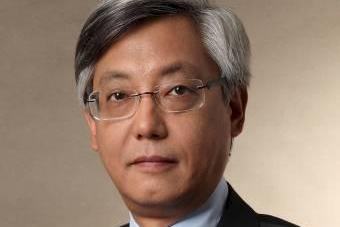
China’s astonishing growth rates of recent years is starting to ebb, but still represents a powerful performance that is the envy of most of the developed world. Overall growth is thought to be between 6%-7% from now until 2020 when around 30m vehicles will be sold annually. Estimates put the so-called ‘turning point’ or peak annual rate at around 40m cars per year, representing huge OEM and supplier business potential. Simon Warburton talked to global component producer, Faurecia deputy general manager China Division, Jingcheng Li, about opportunities which challenges such as emissions control and lightweighting, present.
j-a: How does Faurecia view the Chinese market?
JL: By the end of October, overall the market growth in terms of production is almost 8%, but in sales is 6.5%. This is the overall market, including passenger vehicles and commercial vehicles and this performance is negatively impacted by commercial vehicles.
In the passenger vehicle segments, you have mini-vans, which [are] mainly produced by local Chinese OEM [s], but if you look at SUVs and Sedans, growth is significant, about 10% this year and this is the segment where Faurecia is the more present.
There will be a slowing down, but we believe within the different segments of the automotive industry we can still enjoy some growth, around 6%-7%, even to 8%.
j-a: Faurecia reviews its mid-term plan every year and you maintain you will be on track to double sales in China to more than EUR4bn (US$5bn) during the next four years, growing at twice the market rate. Is this realistic?

US Tariffs are shifting - will you react or anticipate?
Don’t let policy changes catch you off guard. Stay proactive with real-time data and expert analysis.
By GlobalDataThe EUR4bn is the mid-term plan – we renew it every year and we re-confirm based on the business situation. China will reach EUR4bn.
j-a: You have a range of relationships with partners in China, for example, Chang’an Automobile Group and Faurecia PowerGreen Emissions Control Technologies. Are partnerships key for Faurecia?
JL: We have to work on a case by case basis. Being [an] automotive parts supplier, we do not have the same obligation or rules imposed by the Chinese government to the OEMs. We can negotiate on a stand-alone basis.
j-a: There has been discussion of China’s debt situation – does Beijing still view the automotive sector as key?
JL: The Chinese government has significant issues [for example] public debt, which is huge.[The] automotive] industry is clearly a focus for central government.
Between China and Europe this year, there is a lot of top-level visits and [in] each of those visits automotive is always omnipresent in their discussions.
j-a: China’s population is forecast to grow to 1.44bn by 2025, creating ever-greater environmental challenges. What is Faurecia’s view?
JL: China is facing a big issue of air pollution, especially in Beijing and Shanghai. China has a very ambitious [fuel target] next year and [petrol] has to reach 6.9L/100km. By 2020, this target is 5L/100km so it is very challenging.
From the Faurecia side, we [also] work on our emissions control and we have our portfolio of technologies and innovation to address market evolution. We are [also] going to see more lightweighting.
For CO2 reduction, this is a big challenge for China. We know the peak period for CO2 will come from 2025-2030, so the Chinese government has to take some actions from now on.
[With] the 13th Five Year Plan, the key focus will be this one. This is why lightweight will become a key topic for Chinese industry.
China is facing a big issue of air pollution, especially in Beijing and Shanghai. The Chinese consumer might not be as sensitive as American people [for example] for the moment, but this will be changed in a way because the most population live in big cities.
They are suffering with the air pollution issue and today we see there is a pretty high development with small cars in China.
With the new generation of Chinese population, they might be going towards European or American [environmental] trends. We start today some activities together with some government institutions and there is a lot of debate on Euro IV or the equivalent of Euro VI.
From Faurecia, a least in China, we participate and give our opinion as we have a lot of technological solutions. We start to be more active in this domain.
j-a: Faurecia now has 38 sites in China employing 13,000 staff and four R&D centres with 800 engineers – how is the company perceived in China?
JL: Faurecia in China enjoys a pretty good reputation on the market with our OEMs. What they are recognising with Faurecia is the operational performances of our plants.
Among the top ten of the Faurecia Group, seven plants are located in China. We have efficient plants, which are considered more or less the benchmark.
We locate our R&D competence in China and can develop for worldwide programmes. What they recognise in Faurecia is globally, the Group is very dedicated to the [automotive] industry. We do not have diversified activities outside the automotive industry, which is perceived as a strength.”
j-a: How do you see the Chinese market evolving?
JL: There is a big issue for the big cities, but today we see market growth in central and Western regions of China. In these locations, density of the car is still pretty low.
In China, we have a discussion, what is the annual volume turning point, whether it is 40m or 70m. This is the range. It seems the market says this point will be 40m.
Although the overall trend is a gentle decrease in growth, China’s sheer size of population, forecast to rise to 1.44bn by 2025, could see vehicle production rise from the current 22m units to more than 30m by 2017.



